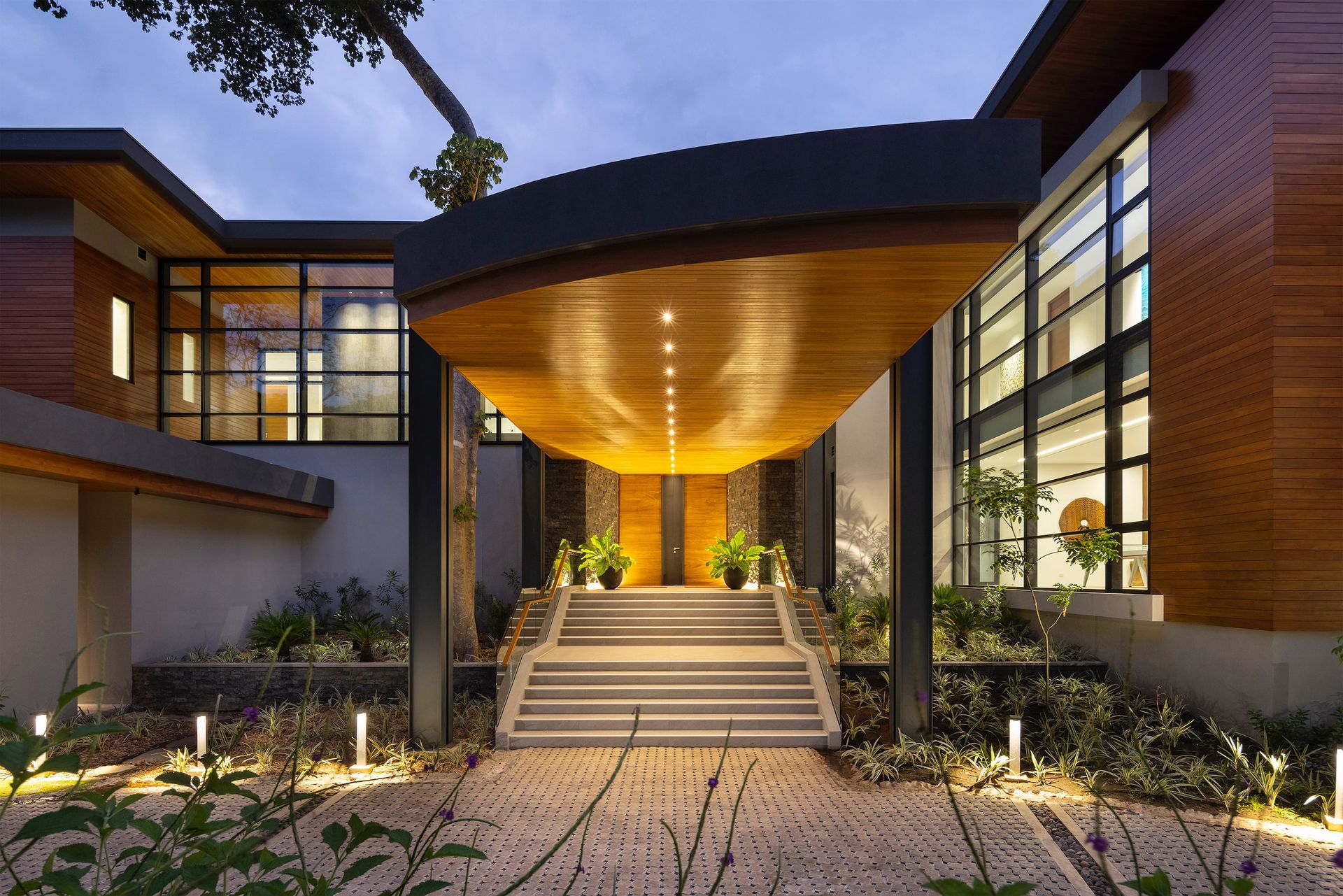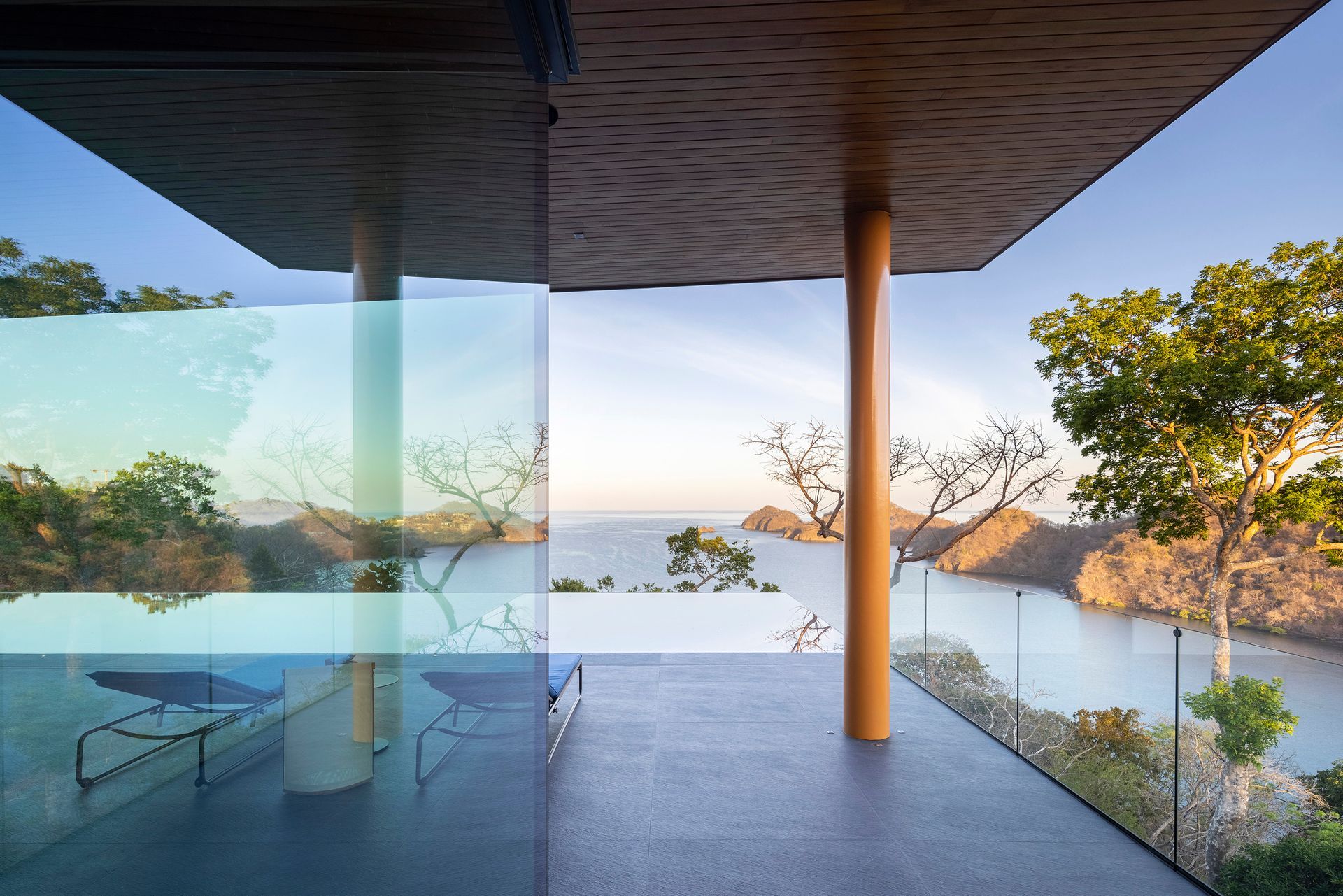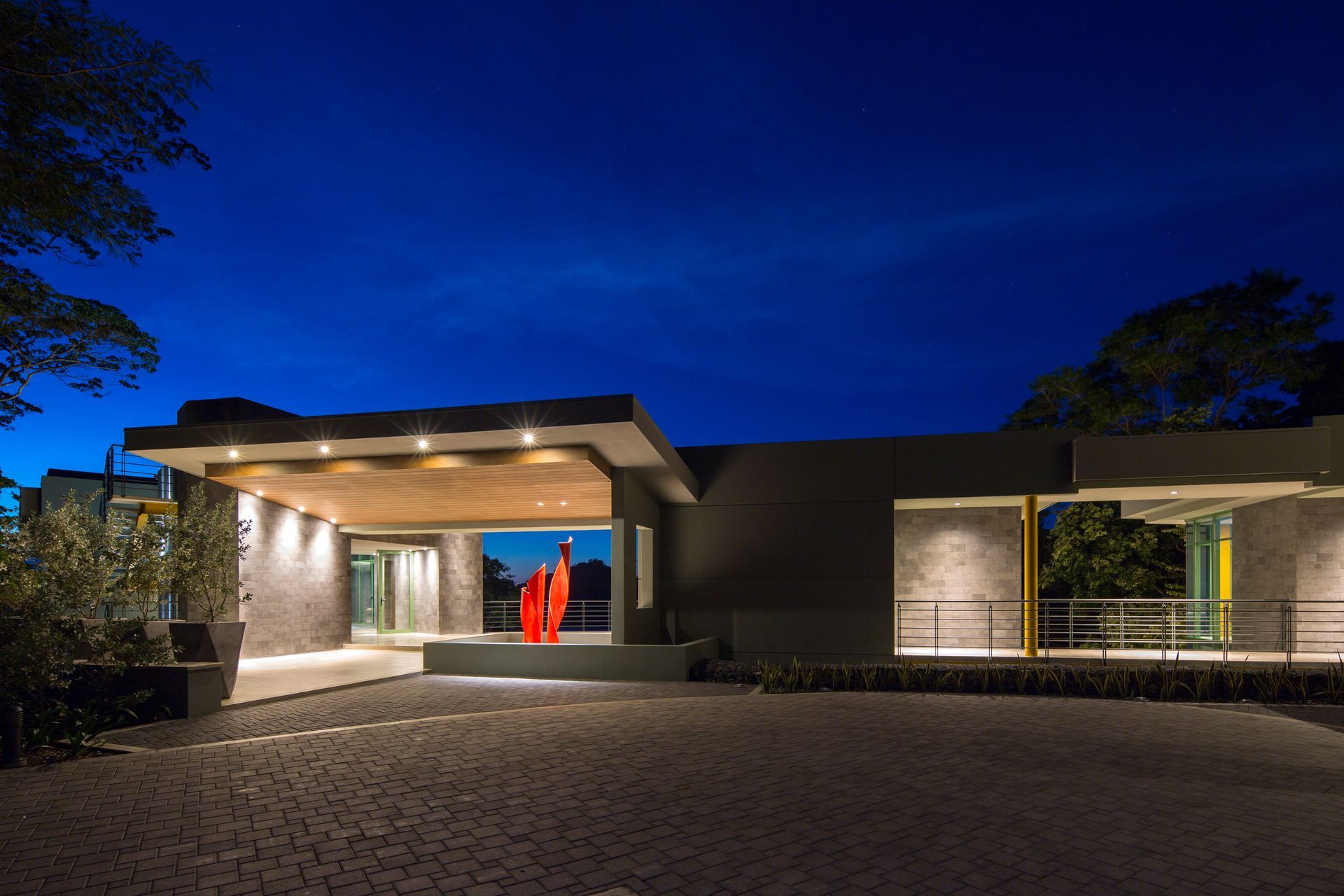How Tariffs Impact Luxury Construction Costs in Costa Rica
Navigating Global Trade Winds:
How New U.S. Tariffs are Influencing Luxury Construction Costs in Costa Rica
The global economic landscape is in constant flux, and recent shifts in international trade policies, particularly new tariffs implemented by the United States in early 2025, have introduced fresh complexities for numerous sectors worldwide.
If you're planning to build a home in Costa Rica, the question isn't simply whether to wait. The real challenge is more strategic:
How do you keep your project budget under control in the face of evolving global costs — without compromising the quality or vision of your future home?
This article explores how U.S. tariff changes intersect with Costa Rica's own fiscal policies—and more importantly, how informed, proactive design and sourcing decisions can transform these challenges into opportunities for value and control.
Decoding the New U.S. Tariff Landscape
In the first half of 2025, the United States enacted significant adjustments to its import tariff structures—changes that have now been further intensified.
A baseline tariff of approximately 10% continues to apply to a broad range of imports. However, in a major policy escalation as of June 2025, the U.S. increased its tariffs on imported steel and aluminum from 25% to 50%, affecting nearly all global sources.
This change significantly heightens the pressure on construction material costs worldwide.
Additionally, the scope of affected goods has expanded to include finished goods that incorporate steel or aluminum components. This includes items such as lighting fixtures, kitchen appliances, and sophisticated architectural finishes.
Countries such as China also continue to face multifaceted and elevated tariff measures, compounding the impact on globally sourced goods.
This evolving trade stance marks a sharp departure from prior U.S. policy and is sending deeper ripples through international supply chains.
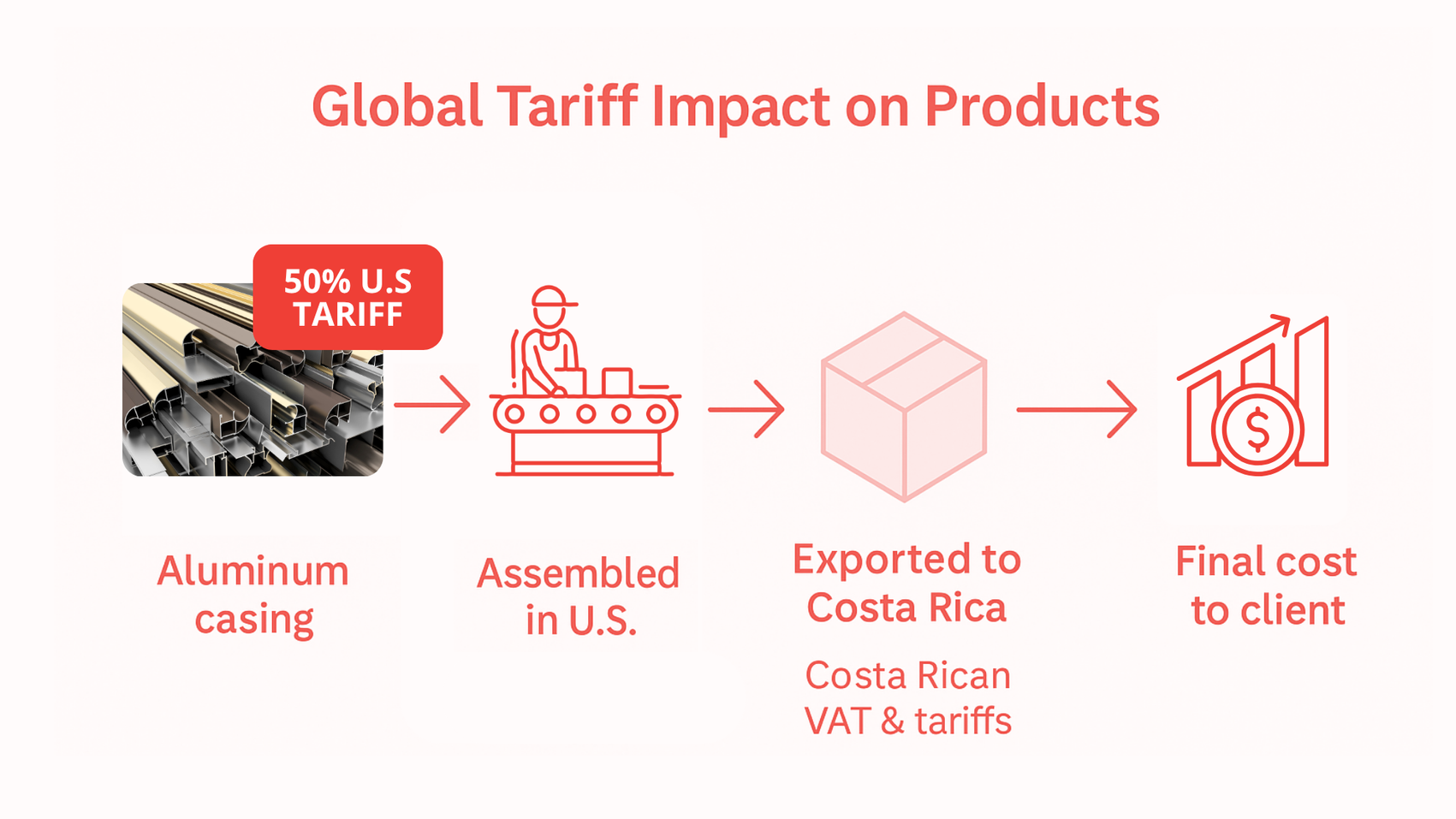
The Ripple Effect: Global Material Prices Under Pressure
While implemented by the U.S., these tariffs inevitably influence global market prices for essential construction materials.
With tariffs on steel and aluminum now doubled to 50%, this dramatic escalation is triggering renewed volatility and upward pressure on global base prices.
Steel, aluminum, lumber, and even manufactured goods like appliances, high-end fixtures, and sophisticated finishes are all traded internationally.
When tariffs raise the cost of these goods in the U.S., the impact often extends worldwide, as manufacturers recalibrate supply chains and adjust pricing strategies.
This ripple effect means
luxury construction projects—even outside the U.S.—must contend with increased material costs driven by global shifts, significantly impacting the cost of your new home in Costa Rica.
Ripple Effects on Finished Goods
The situation becomes more complex with finished goods that incorporate steel or aluminum components.
Luxury lighting fixtures, kitchen appliances, and bespoke architectural hardware may now carry elevated costs, even if metal is not their primary material.
These embedded tariffs raise production expenses across the board, pushing prices higher before products ever leave the manufacturing country.
Whether you’re planning to build a house in Costa Rica for personal use or investment, fluctuations in material costs have a direct effect on your bottom line.
Real-World Example: How U.S. Tariffs Inflate the Cost of a Common Lighting Fixture
Consider a U.S.-based manufacturer producing high-specification LED lighting fixtures.
If the fixture incorporates imported aluminum casings—now subject to a 50% U.S. tariff—that surcharge is built directly into its production cost.
On top of that, if the internal components such as LED modules or electronic drivers are sourced from countries like China, which also face elevated U.S. tariffs, the cumulative impact on pricing can be substantial.
By the time this U.S.-assembled fixture is shipped to Costa Rica, it arrives with multiple layers of tariff-related cost inflation already embedded in its price.
Ironically, it may end up costing more than a comparable fixture sourced directly from Europe—where manufacturers may benefit from more favorable trade agreements and more strategically structured supply chains.
Why Strategic Sourcing Matters More Than Ever
European manufacturers, particularly those in Spain or Italy, may not only benefit from more stable sourcing but also enjoy preferential trade agreements with Costa Rica.
These agreements can reduce import duties, providing a cost advantage over U.S.-sourced goods despite longer shipping routes.
This all reveals a critical shift: the country of final assembly no longer determines cost-effectiveness.
To truly optimize value, a detailed, product-by-product analysis of the entire supply chain is now essential.
This makes a case for informed decision-making, particularly when you’re calculating cost per square meter and optimizing every aspect of the build.
Understanding where raw materials originate, how components are sourced, and through which countries products are routed can make a significant difference in total landed cost.
The Costa Rican Context: A Multi-Layered Cost Environment
To fully appreciate the impact on local projects, it's essential to understand Costa Rica's own well-established fiscal framework.
- An Existing Tariff System: Unlike the recent U.S. policy shifts, Costa Rica has long maintained a comprehensive import tariff system. Most goods imported into the country, including construction materials, are subject to duties. These are typically determined by the type of product being imported, based on a detailed schedule, rather than primarily by the country of origin. This, combined with a Value Added Tax (VAT) of 13% applied on top, has always been a significant factor in the cost of high-quality imported goods necessary for luxury construction. When evaluating the total construction cost of your project, it’s essential to look beyond material prices alone. Labor costs, tariffs, import duties, and supply chain dynamics all contribute to the final cost to build a home in Costa Rica.”
- Leveraging Preferential Agreements: Within this framework, Costa Rica has also negotiated trade agreements that can offer advantages. For instance, certain goods imported directly from the European Union, such as specialized aluminum window systems from Spain or Germany, may qualify for significantly reduced import tax rates – sometimes as much as half – provided specific documentation protocols are meticulously followed. This approach can significantly impact the overall cost of building, especially for those planning a dream home or a boutique hotel where premium materials are non-negotiable.
- The Layered Impact of New U.S. Tariffs: The new U.S. tariffs introduce an additional consideration. If the global base cost of a material or product increases due to U.S. tariffs (either on the raw materials used to make it, or on its export if routed through the U.S. market), then Costa Rica's product-specific import duties and VAT will subsequently be applied to this higher initial value. This can compound the cost escalation.
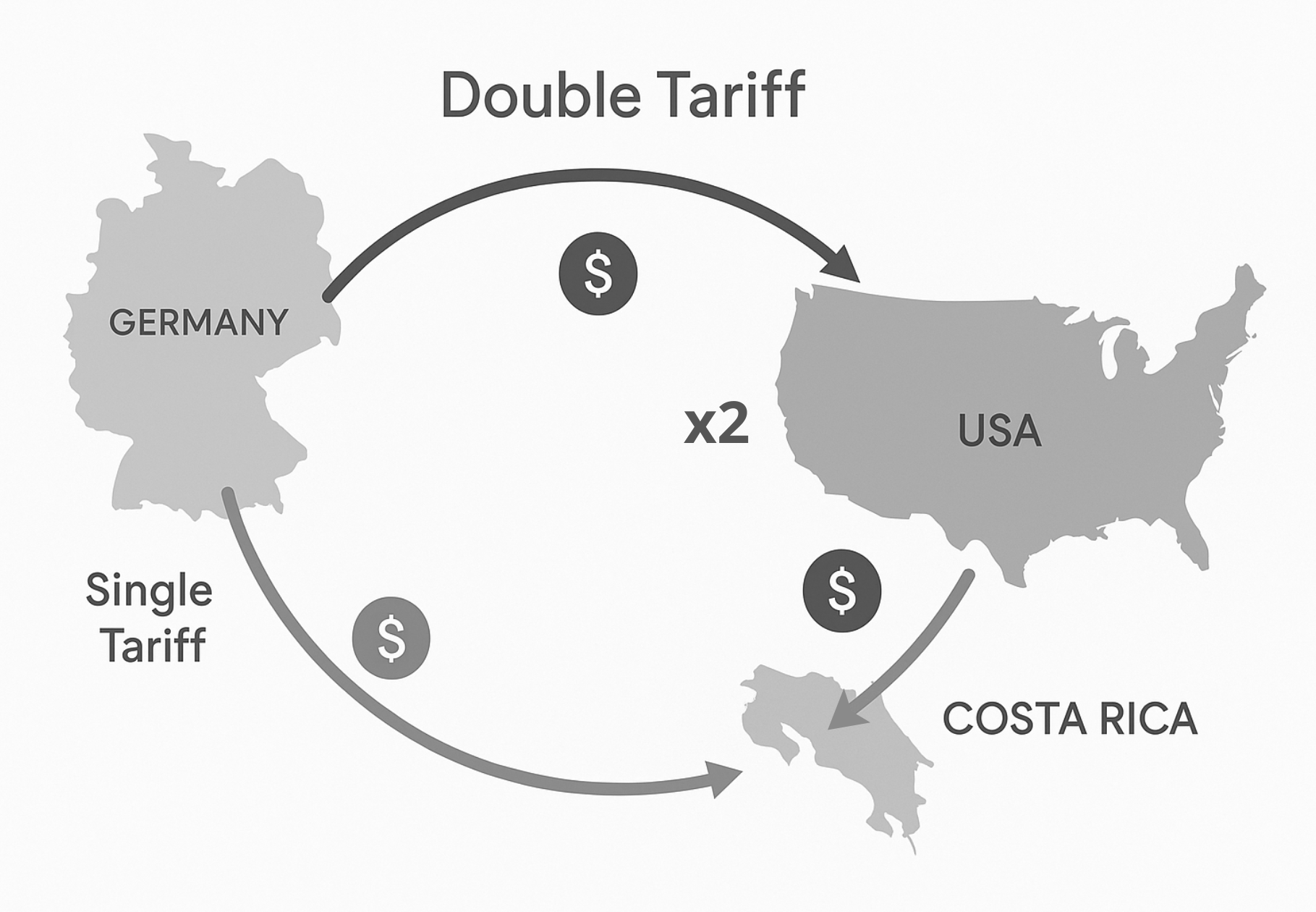
The "Double Tariff" Challenge: Regional Distribution Models Under Scrutiny
A common practice for many international brands, including esteemed European manufacturers of fixtures and finishes, is to utilize regional distribution hubs to serve various markets. For Latin America, these hubs are frequently located in the South-Eastern U.S.A., often in Florida.
In the current environment, this model presents a distinct challenge.
Products shipped from their country of origin (e.g., Germany) to a U.S. distribution center could potentially incur U.S. import tariffs upon entry into the U.S.
If these goods are then re-exported to Costa Rica, they would subsequently face Costa Rica's import duties. This "double tariff" scenario, U.S. tariffs followed by Costa Rican tariffs, can unnecessarily inflate the final landed cost of materials.
Securing Your Vision & Value: How SARCO Architects Navigates Tariff Complexities for Your Benefit
In this evolving financial landscape, SARCO Architects' deep-seated expertise and proactive methodologies translate directly into tangible benefits for your luxury residential or boutique hospitality project.
Our approach is designed to safeguard your investment and ensure the seamless realization of your unique vision:
- A Holistic Design & Management Process for Proactive Cost Control: SARCO Architects' signature integrated approach—uniting architectural design, interior architecture, lighting design, and comprehensive construction management—is inherently built to navigate complexities like the current tariff landscape. For you, this means that cost implications, including potential tariff impacts, are considered holistically from the earliest design stages, not as an afterthought. We analyze and specify materials and systems with a constant awareness of these financial variables. This contrasts sharply with the traditional 'design-bid-build' model, where pricing and tariff considerations often only surface after design is complete, potentially leading to costly redesigns or construction documents that no longer accurately reflect the best value solutions. Our integrated process ensures that your project benefits from informed decisions made proactively, resulting in greater budget certainty, a seamless transition from design to construction, and ultimately, a superior outcome aligned with your vision and financial parameters.
- Optimize Your Investment with Direct Global Sourcing: We proactively engage and negotiate with original manufacturers worldwide to arrange direct shipments to Costa Rica. For you, this strategy is key to potentially significant cost savings. By circumventing now-problematic U.S.-based distribution routes, we aim to shield your project from compounded U.S. tariffs and unnecessary intermediary markups. This means more of your budget is invested in the superior quality of materials and craftsmanship that define your property, rather than being absorbed by avoidable logistical overhead.
- Achieve Superior Value through Intelligent Brand & Supplier Selection: The current tariff environment can unexpectedly shift the cost-effectiveness of even the most reputable brands. Our team conducts exhaustive "total landed cost" analyses for all critical materials and finishes. The benefit to your project is clear: every sourcing decision is optimized against current market realities, ensuring you receive the best possible value without compromising on luxury or design intent. This empowers you to access the highest quality options that bring your architectural vision to life, preventing overpayment due to newly inefficient supply chains and making your budget work more effectively.
- Leverage Our In-Depth Local Knowledge for Global Savings: Our comprehensive understanding of Costa Rica's intricate customs framework, including vital trade agreements such as those with the European Union, becomes your distinct advantage. For your project, this translates into the strategic pursuit of reduced import duties on eligible premium materials. We meticulously manage the complexities of compliance and documentation, ensuring every opportunity to optimize your expenditure through legitimate trade benefits is actively pursued, directly enhancing your project’s financial efficiency and overall value.
At SARCO Architects, these proactive strategies are fundamental to our philosophy of meticulous planning and unwavering client advocacy.
Our goal is to transform potential market challenges into opportunities for intelligent savings and enhanced project value, providing you with the confidence and peace of mind to see your exceptional house in Costa Rica come to fruition.
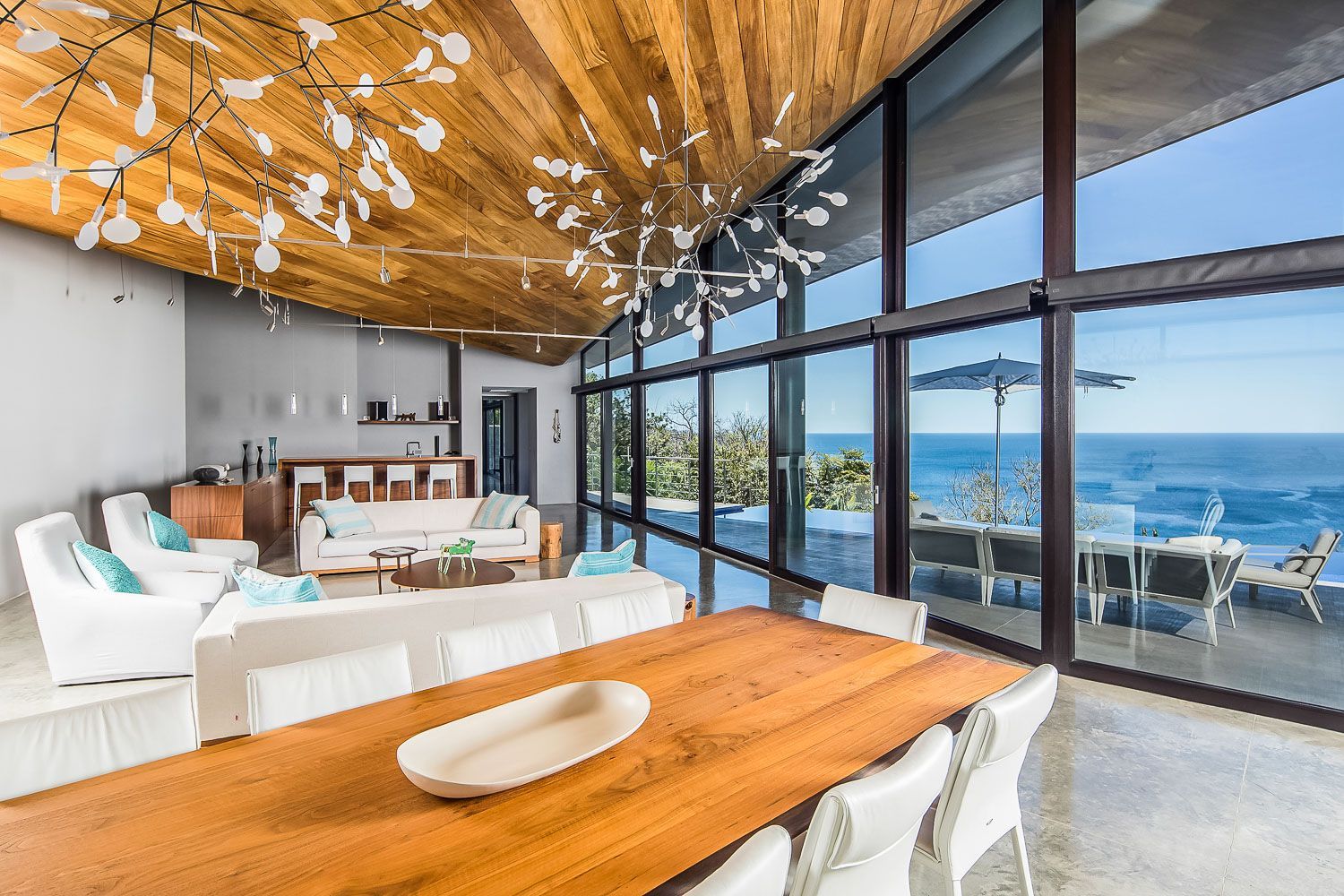
Costa Rica's Enduring Appeal: A Foundation of Value
Despite the complexities of the global trade environment, Costa Rica continues to be an exceptionally attractive destination for developing bespoke luxury residences and unique boutique hospitality experiences.
Its political stability, breathtaking natural beauty, and commitment to sustainability provide a foundation of enduring value.
The key to realizing these projects successfully, especially in the current climate, lies in partnering with experienced, locally knowledgeable professionals who can expertly manage these intricate cost variables.
Confidence Through Expertise
However, these challenges are not insurmountable.
If you’re considering a bespoke luxury residence or boutique hospitality project in Costa Rica, let’s explore how we can turn complexity into clarity—and elevate your vision into reality.Schedule your personalized consultation with SARCO Architects today.
FAQ
How are new U.S. tariffs impacting luxury construction costs in Costa Rica?
While the new tariffs were implemented by the United States, they have a ripple effect on global material prices for items like steel, aluminum, lumber, appliances, and fixtures. Since these materials are traded internationally, increased U.S. tariffs can drive up their base costs worldwide. Furthermore, products manufactured in the U.S. using imported components affected by these tariffs will have higher production costs embedded, which can make them more expensive when imported into Costa Rica. This layering of costs ultimately contributes to potential increases in luxury construction expenses.
How do Costa Rica's existing import tariffs interact with the new U.S. tariffs?
Costa Rica has a long-standing and comprehensive import tariff system, with duties and a 13% VAT applied to most imported goods based on product type, not primarily on the country of origin. The new U.S. tariffs introduce an additional layer: if the global base cost of a material increases due to U.S. tariffs, Costa Rica's product-specific import duties and VAT will then be applied to this higher initial value. This compounding effect can further escalate the final cost of materials landed in Costa Rica.
What is the "double tariff" challenge, and how does it affect projects in Costa Rica?
The "double tariff" challenge arises when international brands use regional distribution hubs in the United States, particularly for serving Latin American markets. Products shipped from their origin country (like Germany) to a U.S. distribution center may incur US import tariffs upon entry. If these goods are then re-exported to Costa Rica, they face Costa Rica's import duties as well. This process of incurring U.S. tariffs followed by Costa Rican tariffs on the same product can significantly inflate the final landed cost of materials for a project in Costa Rica.
How can understanding the full supply chain help mitigate tariff impacts?
Simply knowing the country where a product is finally assembled is no longer a sufficient guide to cost-effectiveness in the current tariff environment. A granular, product-by-product analysis of the entire supply chain is now essential. This involves understanding where raw materials and components originate and how they are routed, including through potential U.S. distribution hubs. This detailed analysis allows for identifying potential "double tariff" scenarios and exploring alternative sourcing strategies to optimize costs.
How does a holistic design and management process help in navigating tariff complexities?
An integrated approach that combines architectural design, interior architecture, lighting design, and comprehensive construction management allows for potential tariff impacts to be considered from the earliest design stages. This proactive approach ensures that material specifications and sourcing decisions are made with an awareness of potential cost variables stemming from tariffs. This contrasts with traditional models where tariff implications might only become apparent later in the process, potentially leading to costly redesigns or budget overruns.
How can direct global sourcing help optimize investment in luxury construction in Costa Rica?
Direct global sourcing involves engaging and negotiating with original manufacturers worldwide to arrange shipments directly to Costa Rica, bypassing U.S.-based distribution routes. This strategy can lead to significant cost savings by potentially shielding the project from compounded U.S. tariffs and unnecessary intermediary markups. By avoiding the "double tariff" scenario, a greater portion of the project budget can be allocated to the quality of materials and craftsmanship.
How is value achieved through intelligent brand and supplier selection in the current environment?
The current tariff environment means that the cost-effectiveness of brands can shift unexpectedly. Conducting detailed "total landed cost" analyses for critical materials and finishes is crucial. This involves evaluating the cost of products, including potential tariff implications and shipping, to determine the most advantageous sourcing options. This ensures that every sourcing decision is optimized against current market realities, allowing projects to access high-quality options at the best possible value.
How does local knowledge of Costa Rica's customs framework offer a distinct advantage?
A deep understanding of Costa Rica's intricate customs framework, including its existing tariff system and vital trade agreements (such as those with the European Union), provides a distinct advantage. This knowledge allows for the strategic pursuit of reduced import duties on eligible premium materials. Meticulously managing compliance and documentation ensures that every opportunity to optimize expenditure through legitimate trade benefits is actively pursued, directly enhancing the project's financial efficiency and overall value.
